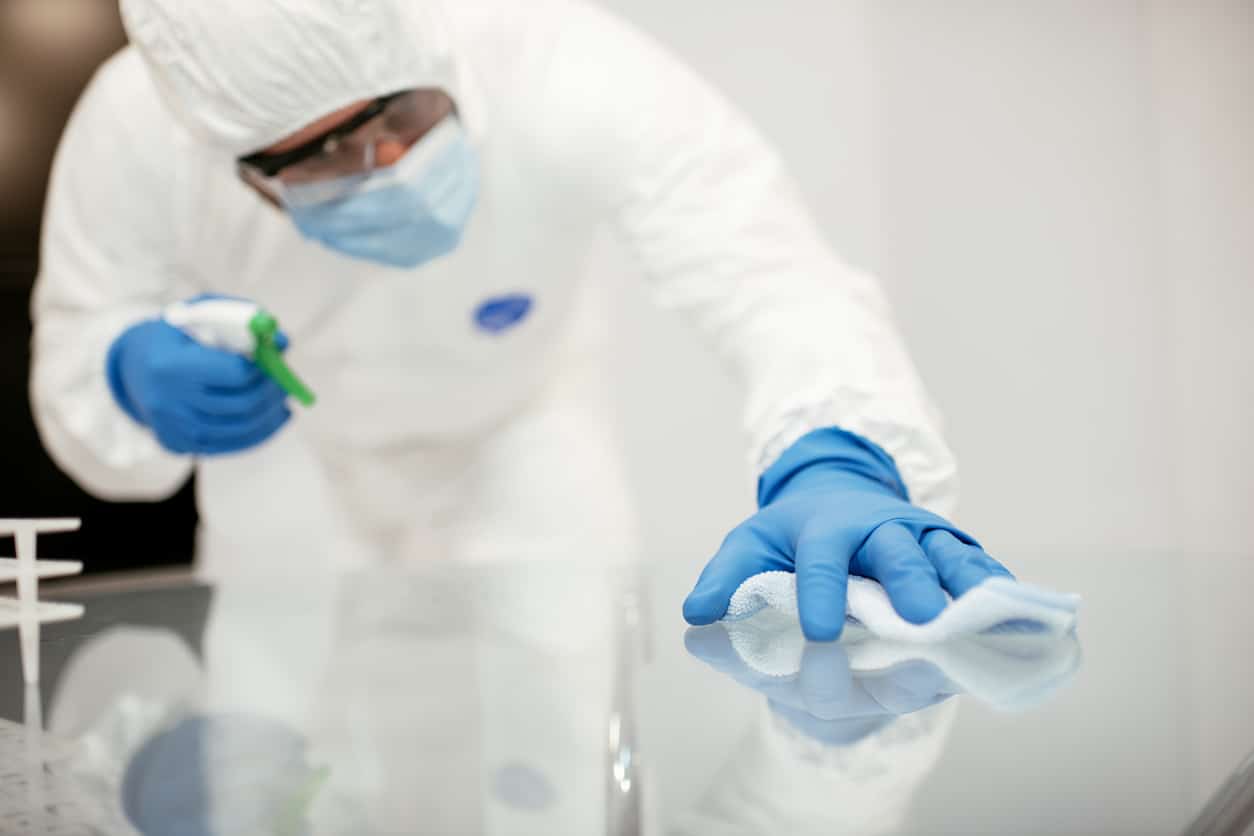
Topic:
Key Considerations
When most people think of the inner workings of a specialist laboratory, they tend to think of the stereotypes – wild chemical experiments and all manner of substances being combined in the most dramatic fashion possible. They rarely consider one of the most important parts of running any lab correctly - cleaning it.
Labs, like any other room or workplace, require regular cleaning in order to remain fit-for-purpose. However, not only do they have to be clean, they need to be sterile too. Clean and sterile equipment is essential for almost every single experiment and procedure thinkable. It goes without saying that fixtures, fittings, cupboards, and work surfaces all need to be cleaned to a sufficient standard. But on top of that, glassware and other laboratory equipment needs to be kept in pristine condition as well. For chemical, pharma, food, and forensic, there's simply no room for error.
Cleaning protocols must ensure that items are cleaned physically and chemically, while also removing any sign of bacteria or other contaminants. And that's not just for the sake of lab work either. Consider it part of building a stronger lab safety culture in a post pandemic world. Additionally, audits might deem your cleaning procedures unacceptable and severely limit the work you’re permitted to carry out.
So, labs need to be clean! We've made that abundantly clear. Now for the more important consideration – what's the best cleaning solution for your lab? There's a lot to scrutinise.
Will automation make your lab more efficient and sterile? How much does your lab need to reduce cleaning costs? Should you stick to traditional chemical solutions that require some manual input? Or are they less efficient than automated cleaning devices?
Let's take a closer look.
Automation is the future! And that means that for every simple and mundane task, there's a robot that can be programmed to save us time and effort. Right? Right…?
As we all know, it's never quite as simple as that. But automated cleaning can still be a timesaving and highly efficient cleaning solution for your lab. Automated cleaning stations can simplify lab operations and boost productivity. They can also improve the reliability of re-usable equipment and ensure that your experiments never suffer erroneous results.
Autoclaves are one of the most common automated cleaning solutions on the market. They clean (and sterilise) multiple pieces of lab equipment at the same time and, depending on the model, they can accommodate several different items with varying sizes and shapes. They use steam to efficiently eliminate micro-organisms and effectively guarantee clean equipment.
UV-C sterilisation devices are another option to control the risk of infection and decontaminate large areas, as they're able to kill even vegetative bacteria. Robotic arms are also common in pharma labs where, as well as sterilising essential lab equipment, they can even be used to carry out the work of two full-time employees.
Any of these automated solutions can improve workflow and keep labs clean. There could be as little as one cleaning station, or a complex robotic platform capable of carrying out multiple tasks at a time.
However, as always, there are downsides to consider. The most obvious disadvantage is the cost of automation. Autoclaves in particular are very expensive to run, and their very design could do more harm than good. High-temperature steam can easily damage equipment and wet heat residue could impact experiments down the line. Labs need to be redesigned, staff might need to be trained, and there's a general (albeit brief) disruption to the lab's operations.
So, does that make chemical cleaning a viable alternative? Hydrogen-based chemical solutions are still used in thousands of labs around the globe. Chlorine is another common product, and other newer solutions like strong acids and peroxides are also growing in popularity.
Chemical cleaning solutions are becoming more sophisticated while, at the same time, becoming less dangerous to the user. They're significantly cheaper to use than a new robotic platform and in some cases, they could provide more reliable cleaning.
But once again, there are downsides. Chemical cleaning can quickly become complex, and different solutions need to be used on different materials. Stainless steel will react very differently to silicone or plastic when it meets a specific chemical solution.
Certain solutions will need to be watered down, and there are different processes for using each one. Storage and potential spillage also create another possible issue. Not only that, some modern solutions pose a health and safety threat to lab staff and must therefore be used with caution. Everyone in the workplace should be trained on how to safely handle and use the solutions.
Regardless of which cleaning solution you consider, there are pros and cons for both. Automated cleaning can streamline operations at a premium running cost, while chemical solutions might provide a cheaper cleaning station that creates a potential health and safety risk.
It's up to you and your colleagues to analyse the needs of your laboratory and the most cost-effective result. Whichever solution you choose is sure to keep your lab clean and your staff safe. Contact our team for more information on cleaning solutions for labs.
Read our Privacy Policy for more information on how we collect and process data.



No thank you
Read our Privacy Policy for more information on how we collect and process data.